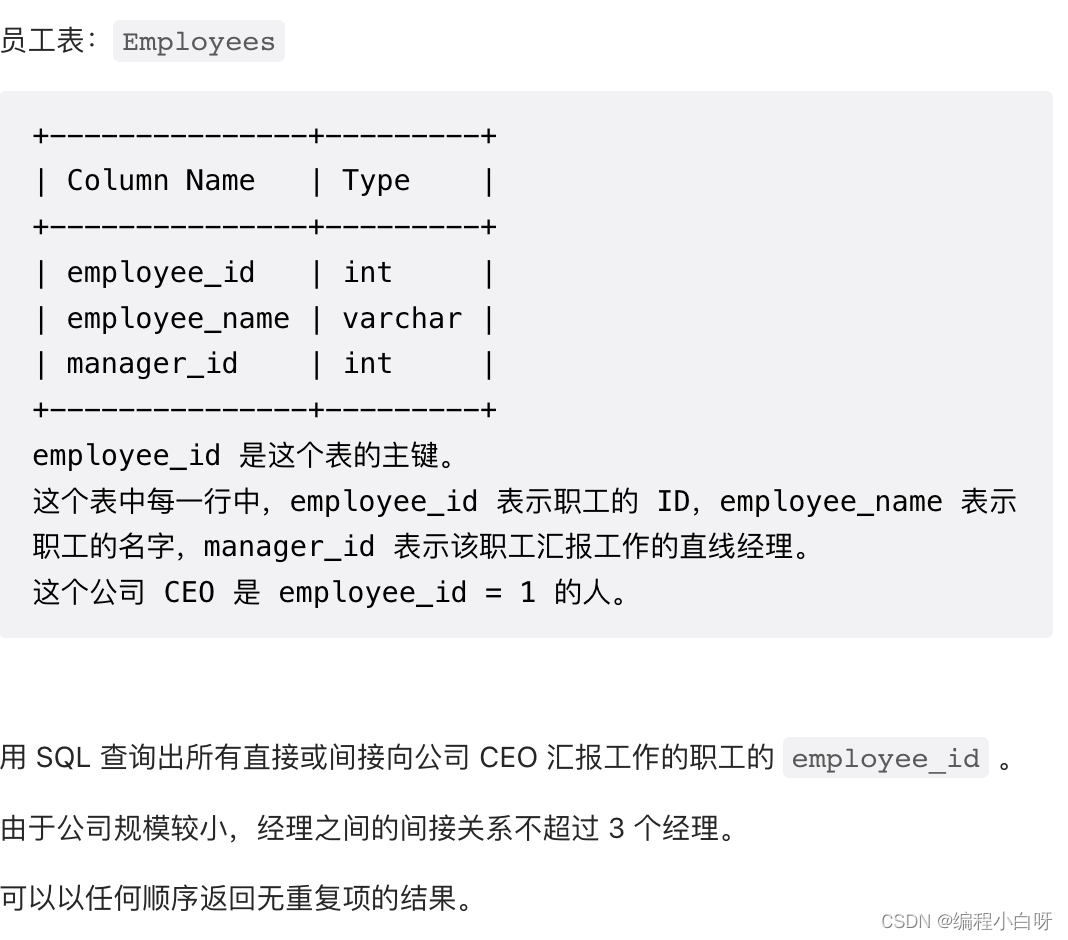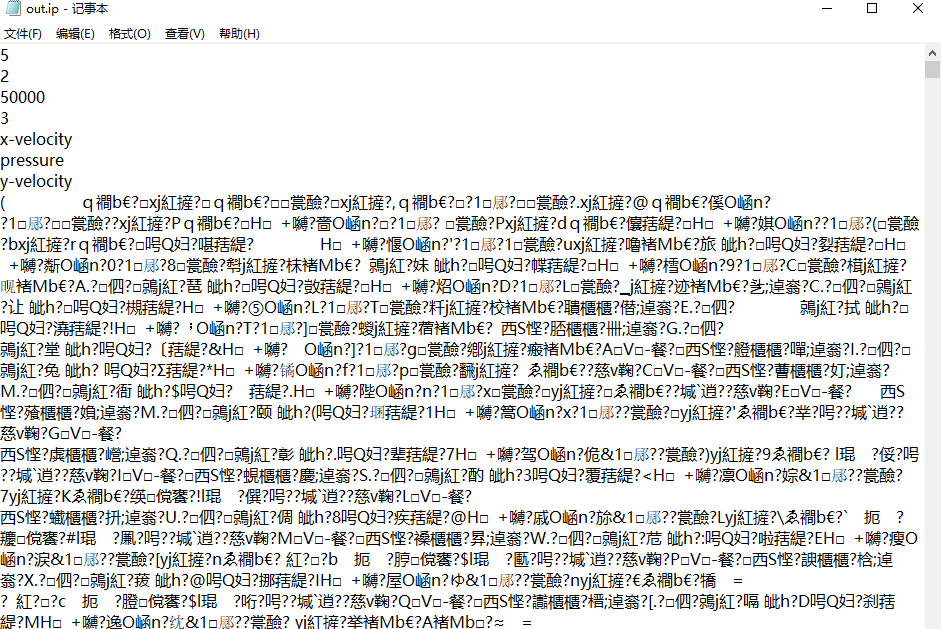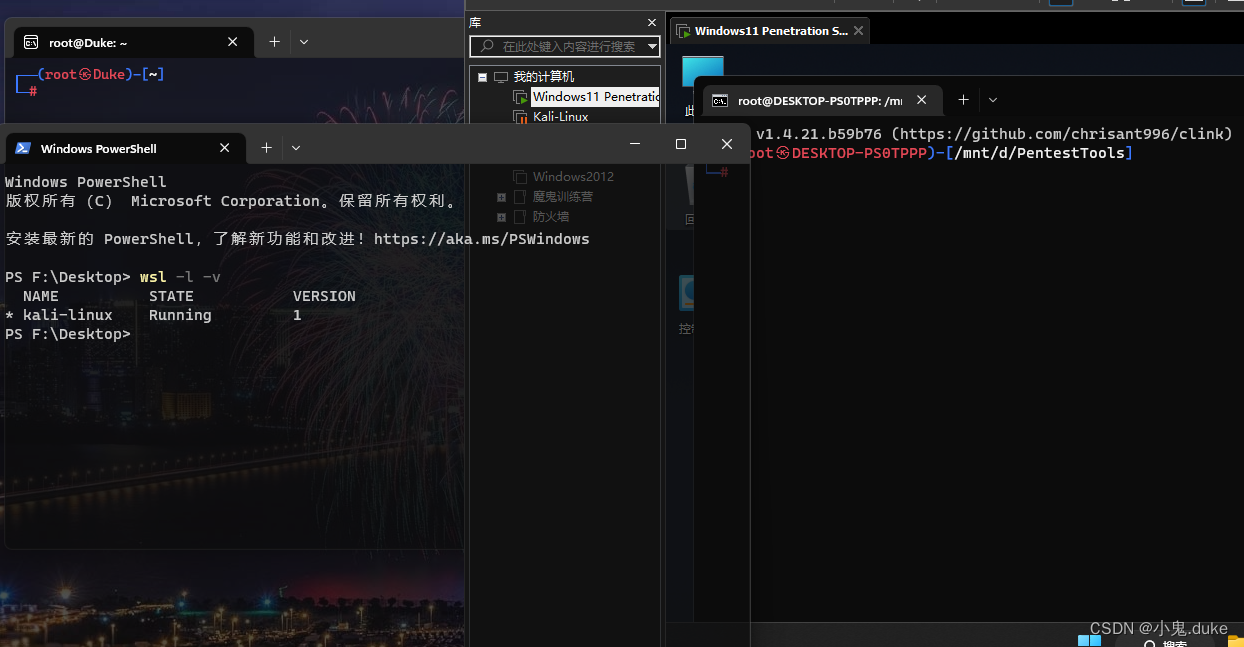目录
- 一、前言
- 二、SPI功能框图
- 三、SPI通信读写数据
一、前言
STM32的SPI外设可用作通讯的主机及从机,支持最高的SCK时钟频率为fpclk/2 (STM32F103型号的芯片默认 fpclk1为 36MHz,fpclk2为 72MHz),完全支持 SPI协议的4种模式,数据帧长度可设置为8位或16位,可设置数据 MSB先行或 LSB 先行。它还支持双线全双工、双线单向以及单线模式。其中双线单向模式可以同时使用 MOSI及 MISO 数据线向一个方向传输数据,可以加快一倍的传输速度。而单线模式则可以减少硬件接线,当然这样速率会受到影响。
二、SPI功能框图

常SPI通过4个引脚与外部器件相连:
MISO:主设备输入/从设备输出引脚。该引脚在从模式下发送数据,在主模式下接收数据。
MOSI:主设备输出/从设备输入引脚。该引脚在主模式下发送数据,在从模式下接收数据。
SCK:串口时钟,作为主设备的输出,从设备的输入
NSS:从设备选择。这是一个可选的引脚,用来选择主/从设备。
STM32F103 SPI引脚总结:

其中SPI1是APB2上的设备,最高通信速率达36Mbits/s(72M/2)。 SPI2是APB1上的设备,最高通信速率达18Mbits/s(36M/2)。
三、SPI通信读写数据
STM32使用 SPI外设通讯时,在通讯的不同阶段它会对“状态寄存器 SR”的不同数据位写入参数,我们通过读取这些寄存器标志来了解通讯状态。下图是“主模式”流程,即 STM32 作为 SPI 通讯的主机端时的数据收发过程。
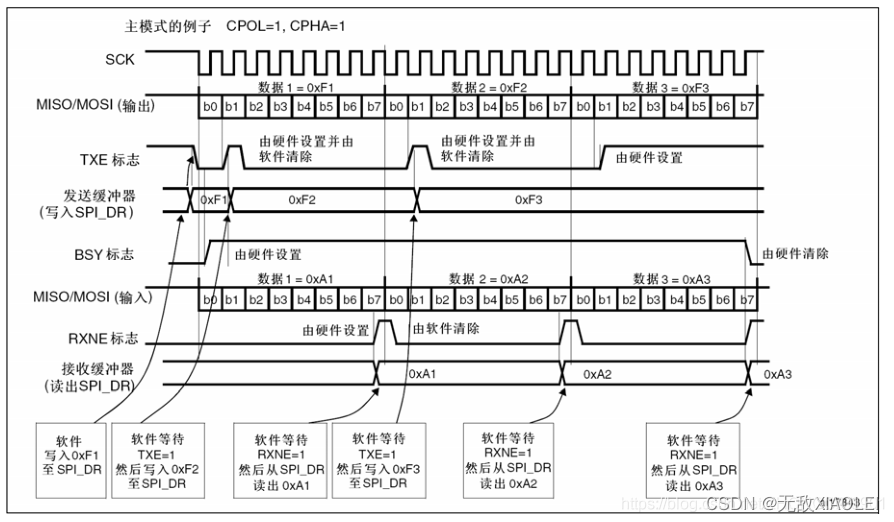
主模式收发流程及事件说明如下:
控制 NSS信号线,产生起始信号(图中没有画出);
把要发送的数据写入到“数据寄存器 DR”中,该数据会被存储到发送缓冲区;
通讯开始,SCK时钟开始运行。MOSI把发送缓冲区中的数据一位一位地传输出去;MISO 则把数据一位一位地存储进接收缓冲区中;
当发送完一帧数据的时候,“状态寄存器 SR”中的“TXE 标志位”会被置 1,表示传输完一帧,发送缓冲区已空;类似地,当接收完一帧数据的时候,“RXNE标志位”会被置 1,表示传输完一帧,接收缓冲区非空;
等待到“TXE标志位”为 1 时,若还要继续发送数据,则再次往“数据寄存器DR”写入数据即可;等待到“RXNE标志位”为 1时,通过读取“数据寄存器DR”可以获取接收缓冲区中的内容。
/**
* @brief 使用SPI读取一个字节的数据
* @param 读取数据的地址
* @retval 返回接收到的数据状态
*/
int8_t SPI_FLASH_ReadByte(uint8_t* pBuffer)
{
SPITimeout = SPIT_FLAG_TIMEOUT;
/* 等待接收缓冲区非空,RXNE事件 */
while (SPI_I2S_GetFlagStatus(BMI160_SPI, SPI_I2S_FLAG_RXNE) == RESET)
{
if((SPITimeout--) == 0) return SPI_TIMEOUT_UserCallback(1);
}
/* 读取数据寄存器,获取接收缓冲区数据 */
*pBuffer =SPI_I2S_ReceiveData(BMI160_SPI);
return 0;
}
/**
* @brief 使用SPI发送一个字节的数据
* @param byte:要发送的数据
* @retval 返回接发送的数据状态
*/
int8_t SPI_FLASH_SendByte(uint8_t byte)
{
SPITimeout = SPIT_FLAG_TIMEOUT;
/* 等待发送缓冲区为空,TXE事件 */
while (SPI_I2S_GetFlagStatus(BMI160_SPI, SPI_I2S_FLAG_TXE) == RESET)
{
if((SPITimeout--) == 0) return SPI_TIMEOUT_UserCallback(0);
}
/* 写入数据寄存器,把要写入的数据写入发送缓冲区 */
SPI_I2S_SendData(BMI160_SPI, byte);
return 0;
}
/**
* @brief Writes block of data to the Slave.
* @param pBuffer: pointer to the buffer containing the data to be written
* to the Slave.
* @param WriteAddr: Slave's internal address to write to.
* @param NumByteToWrite: number of bytes to write to the Slave.
* @retval Communication result
*/
int8_t Bsp_Spi_WriteBuffer(uint8_t* pBuffer, uint32_t WriteAddr, uint16_t NumByteToWrite)
{
int8_t ret;
uint8_t tmpBuf;
/*!< Select the Slave: Chip Select low */
BMI160_CS_LOW();
ret = SPI_FLASH_SendByte(WriteAddr);
ret = SPI_FLASH_ReadByte(&tmpBuf);
/*!< while there is data to be written on the Slave*/
while (NumByteToWrite--)
{
/*!< Send the current byte */
ret = SPI_FLASH_SendByte(*pBuffer);
ret = SPI_FLASH_ReadByte(&tmpBuf);
/*!< Point on the next byte to be written */
pBuffer++;
}
/*!< Deselect the FLASH: Chip Select high */
BMI160_CS_HIGH();
return ret;
}
/**
* @brief Reads a block of data from the Slave.
* @param pBuffer: pointer to the buffer that receives the data read from the Slave.
* @param ReadAddr: Slave internal address to read from.
* @param NumByteToRead: number of bytes to read from the Slave.
* @retval Communication result
*/
int8_t Bsp_Spi_ReadBuffer(uint8_t* pBuffer, uint32_t ReadAddr, uint16_t NumByteToRead)
{
int8_t ret;
uint8_t tmpBuf;
/*!< Select the FLASH: Chip Select low */
BMI160_CS_LOW();
ret = SPI_FLASH_SendByte(ReadAddr);
ret = SPI_FLASH_ReadByte(&tmpBuf);
while (NumByteToRead--) /*!< while there is data to be read */
{
/*!< Read a byte from the FLASH */
ret = SPI_FLASH_SendByte(Dummy_Byte);
ret = SPI_FLASH_ReadByte(pBuffer);
/*!< Point to the next location where the byte read will be saved */
pBuffer++;
}
/*!< Deselect the FLASH: Chip Select high */
BMI160_CS_HIGH();
return ret;
}
备注:其中SPI工作在全双工的模式:
在发送数据的同时会读取数据,主要目的是发送数据,读取的数据是为了清除状态位丢弃即可。
在读取数据的同时会发送数据,主要目的是读取数据,发送数据是为了清除状态位发送无效数据即可。
这样的操作都是为了清除状态寄存器 SR对应的状态。
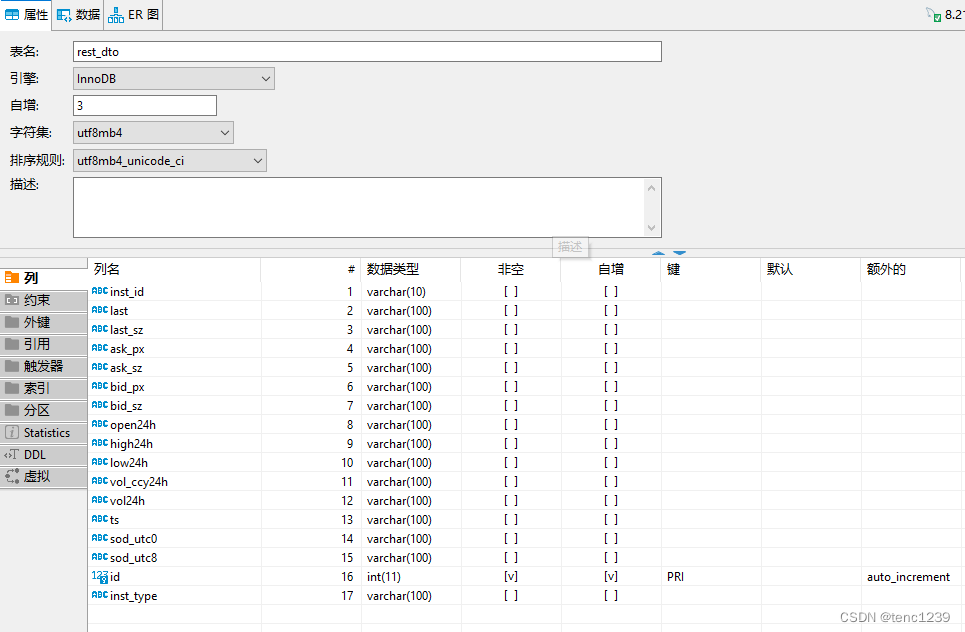
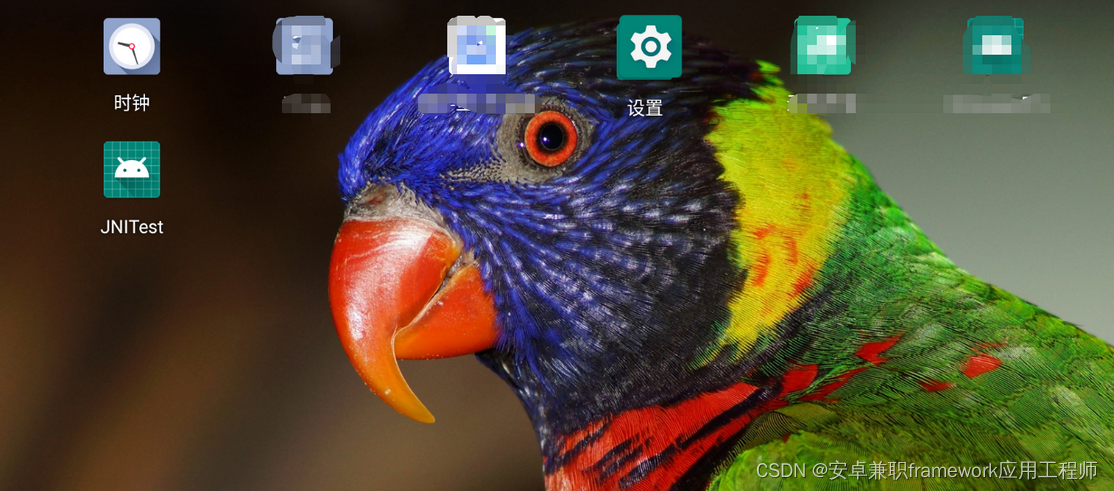



![[架构之路-179]-《软考-系统分析师》-19- 系统可靠性分析与设计 -1- 故障模型、可靠性模型、可靠性分析](https://img-blog.csdnimg.cn/f38135dbfcce4e41b4ed8df5eb33851f.png)



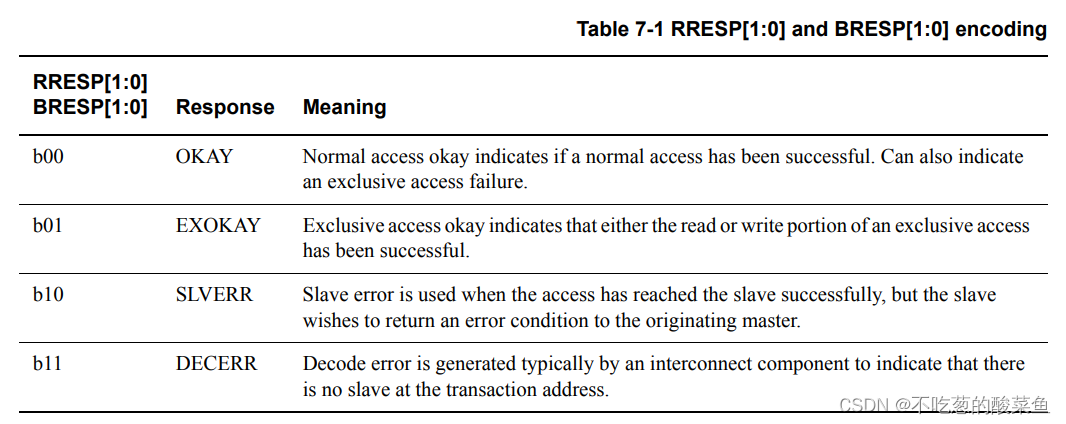
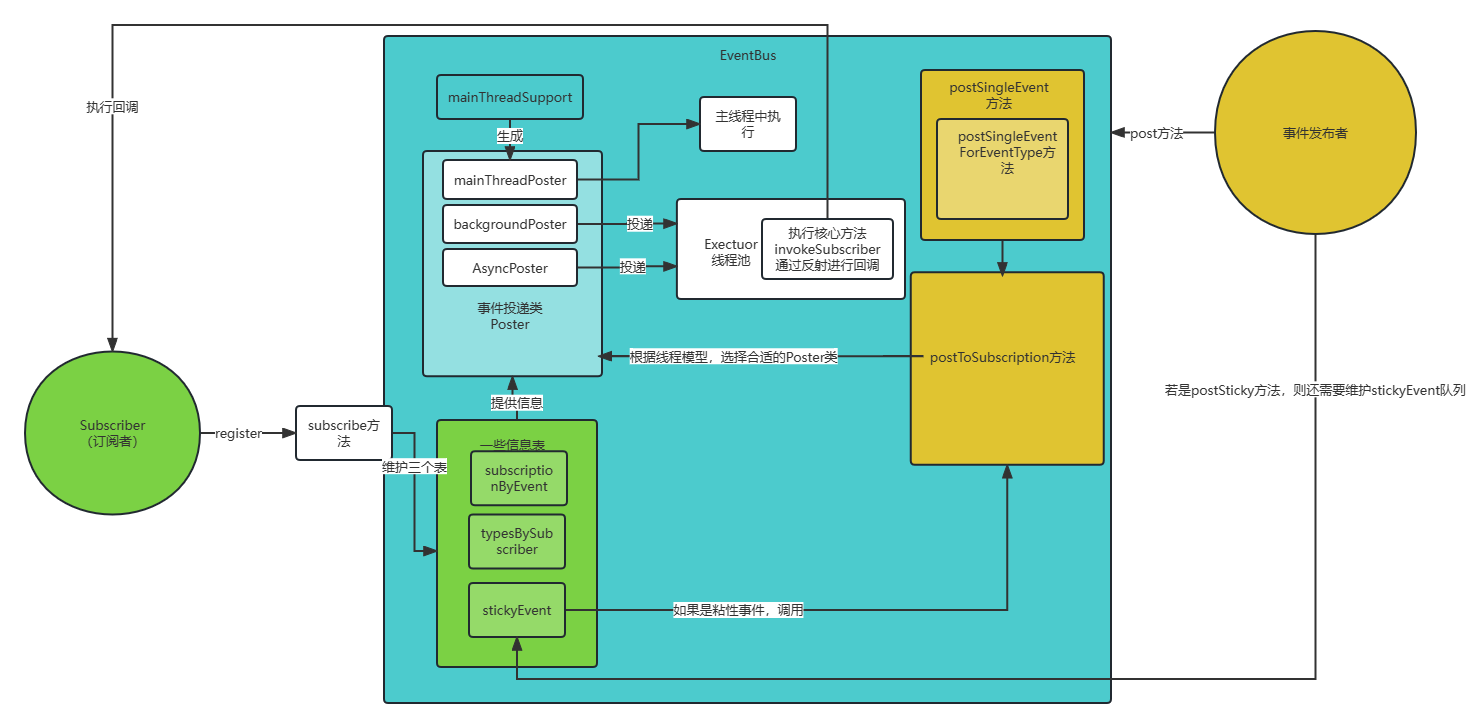

![[架构之路-178]-《软考-系统分析师》-17-嵌入式系统分析与设计- 3- 分区操作系统(Partition Operating System)概述](https://img-blog.csdnimg.cn/img_convert/f6127803753a2c50d6fbf3c886530e08.png)
![[计算机图形学]光场,颜色与感知(前瞻预习/复习回顾)](https://img-blog.csdnimg.cn/fe9d60e5fd0b4bf18f86d88e272243d1.png)


